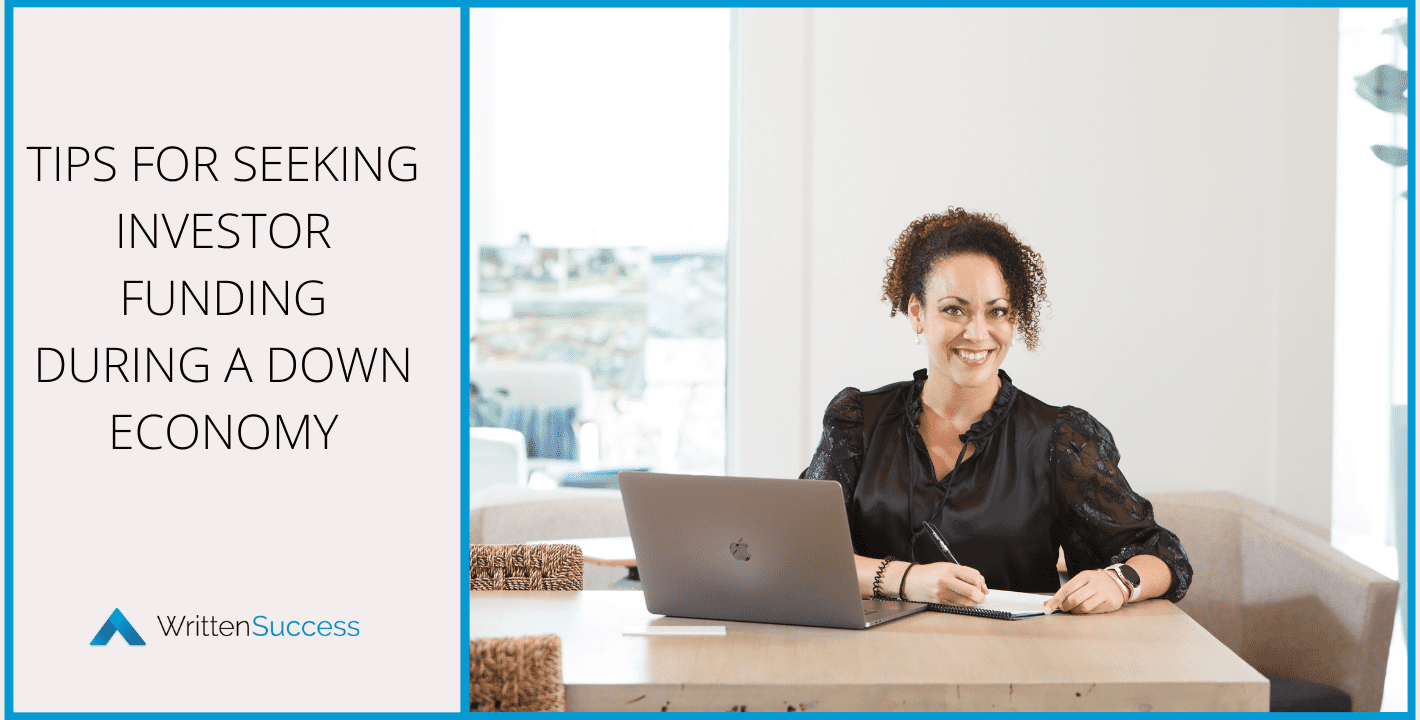As a startup, there are many factors to consider when looking to increase the odds of securing investor funding. This is especially true in a changing economy. To be successful, it’s always helpful to look at historical investment trends, along with examining the current state of the economy (which is now being impacted by COVID-19). It’s important to watch for unique trends based on the state of the current period. With COVID-19, there are trends that mirror other recessionary times. However, it is far from typical compared to other economical down cycles.
This post reviews what every entrepreneur needs to know about seeking investor funding during a down economy, recession, or depression.
Changes to How Investor Funding Works Today
When the world stayed home to slow the spread of COVID-19, the world of investing began to evolve. Investors would previously take in-person meetings with founders, often with a large investment of time on their part. Coordinating schedules, travel, and the actual meeting itself meant an investor had to be very selective with their time. Only the most viable startups with the most captivating of ideas would be worth the time to set up an in-person discussion. This means an entrepreneur would likely be rejected at the earlier stages, based on their business plan, pitch deck, or cover email.
Getting to the live pitch is always the goal. Because more investors can take quick meetings online via video conference, and because it is a new “normal”, investors are more open to accepting virtual pitches today than they ever were before 2020. Meanwhile, as so many new startups are being born during the pandemic, more and more investors are entertaining startups who are earlier in their journeys. Founders with big ideas and perfect timing are getting access to investors more than ever before, even if they have no revenues yet. This creates great opportunity.
What to Expect During a Pitch
With the rise in video pitches, there is also a growing preference by investors regarding how those meetings are conducted. Smaller meetings, in shorter duration, are preferred. It is common for a pitch meeting to last from 5-30 minutes in duration. Additionally, it is expected that the meeting includes only 2-3 persons present. Considering how quick and intimate these pitches have become, some investors call this the “speed dating era” of fundraising.
As always, entrepreneurs need to have an impressive pitch deck and verbal presentation, and a reasonable business valuation. They also need to come prepared with a decent camera, great internet connection, and clear audio. Finally, before delivering their live pitch, it is important to practice a short and powerful delivery. This will help in maximizing every second of the meeting with that investor.
How Recessions Impact Fundraising
Fundraising during a recession or depression brings unique challenges for startups. Investors review deals with more skepticism. Entrepreneurs are more likely to need more time and bigger sums of cash to get things rolling. Investing in startups is already a risky business for angel investors and venture capitalists (VCs). In a down economy, the risks can be even greater.
When the economy is down, consumer spending is usually significantly lower than usual. This can be a challenge for many businesses as they’ll struggle to make sales and grow profits when customers are choosing not to buy.
This is especially impactful for startups. Startup businesses are often still trying to learn how to achieve stable sales and maintain profitability. They’re less likely to have cash on hand for emergencies.
Plus, when they seek investors for financial support, a large amount of startups go under before ever raising the capital needed. Wisdom in the startup community says to have two years of cash on hand before beginning to fundraise, just to cushion things during that investor hunting period. However, this isn’t always possible for a new business, which leaves them vulnerable to times like cyclical recessions and global events like the COVID-19 outbreak.
Lessons Learned from Prior Recessions
Looking back at the 2008 Great Recession, there were clear funding patterns from investors. They leaned heavily on protecting their existing portfolios. They expended efforts to restructure their current businesses to minimize losses and protect them from debt growth.
There was a drop in startup funding by one third in 2009 alone, and the startup community went through an intense period where active investors were hard to find. However, the rebound occurred by 2011, when funding seemed to be strong and generous again. While the overall economy was still actively recovering, the startup world was gaining momentum quickly.
Some startup founders and entrepreneurs remember this time and feel hope. They wonder if the COVID crisis will have two tracks of recovery, where startups are on a faster track than the rest of the economy. If this is possible, then startup businesses may see a faster recovery than others, theoretically, with the help of investor funding.
Some experts parallel a quick start with a quick end when it comes to economic dips. They rationalize that the 2008 recession took a few years to peak, and then took a few years to rebound, making it a U-shaped recession period.
Meanwhile, with the recession in 1990, the market downturned and then came back in less than a year, leading to a V-shaped recession period. Many hope the economic impacts from the pandemic will lead to the same, with the sudden negative impact being undone just as quickly.
Impact on Investor Funding
Entrepreneurs should be aware that just over half of executives in the 2020 EY survey believe the economy won’t make a V-shaped recovery. However, there is an interesting trend that could emerge in lieu of fast economic or investor activity.
The 2020 EY survey also showed that startups are going to gain more attention from corporations. 65% of executives said they are going to focus on acquiring or partnering with startups who are innovative and non-traditional. They’re going to use startups to gain new edge and expand offerings in the post-COVID economy.
This does offer some hope for the rebound of the startup world. Where VC and angel investors may or may not jump in too quickly to financially support startups, corporations may close some gaps in needed funding. Corporations, whether through accelerator programs, startup competitions, or direct acquisitions, may bring unique relief for young businesses with innovative ideas.
What to Expect Today
In Q1 of 2020 which was the start of the pandemic, the entrepreneur community saw lower investment activity globally, especially in the United States. In this period, there were 10% fewer deals than the previous quarter.
By the second quarter of 2020, many startups were desperately watching for signals that investors would resume funding activity. However, with continued uncertainty and widespread shutdowns, startups began preparing for a period where delayed funding was inevitable.
As investors look ahead, they recognize the COVID economic period will be different than 2008 and 1990. With an economy impacted on a global basis with little warning, it’s harder to predict what the following investment period will bring. During a VC survey in April 2020, more than 60% of investors said founder valuations are down significantly.
| 60% | 1.5% |
| 50% | 2.9% |
| 40% | 13.2% |
| 30% | 25% |
| 20% | 48.5% |
| 10% | 8.9% |
The drop in valuation matters, as it directly ties to how much money a startup can ask for, and how much equity they need to offer in exchange. If a company is valued at one million dollars and needs $100,000 from investors, then the investor would expect about 10% equity. However, if the company is only valued at $500,000, then raising $100,000 would entitle investors to about 20% equity.
How to Prepare for Fundraising
All startups preparing to seek investor funding during any economic period should take a careful look at their company valuation. In times of recession, this valuation may need to be updated if the founders are actively fundraising. Startups should be prepared to adjust downward if needed, based on updated forecasts that reflect the recession period, and should be as realistic as possible.






